(434 products available)








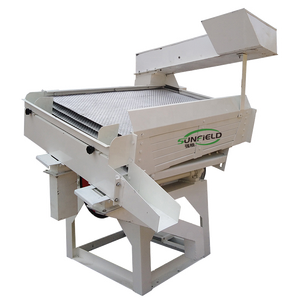



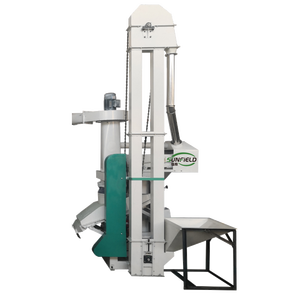



























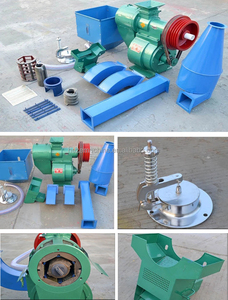








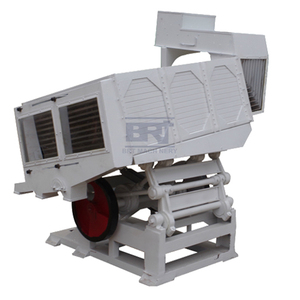



































































































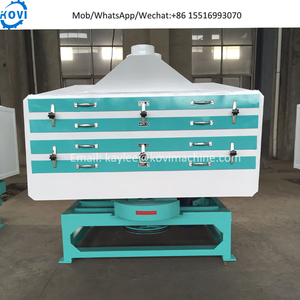









































































A rice paddy separator is a device that helps to identify, segregate, and extract whole grains of rice from broken, partially husked, or non-rice matter. Traditionally, it was done manually, separating rice grains using a small basket, but modern separators have developed into machines with different mechanisms to separate rice grains according to height, weight, and color. The separators work by utilizing the difference in size, shape, and weight of the rice grains and their husks. Rice paddy separators can be found in the following forms.
Screen-based separator
A screen-based separator is a simple machine developed with a small grid that consists of different rectangular or square holes that allow the rice grains to fall through, separating them from the unwanted materials. Modern separators have multiple screens that vibrate, enabling different grain sizes to fall through distinct grid parts. Basin separators function based on rice grain buoyancy. Grains with rice husks reach higher water levels and are removed first, while denser grains settle at the bottom.
Jdbc Gravity Separator
This grain separator is based on the idea that rice grains of different weights can be separated by air blowing upward under high pressure. The vibrating plate then moves sideways, settling the lighter material, which may include rice husk, on one side, while the heavier material, including whole grains of rice, falls on the opposite side.
Optical rice separator
The optical rice separator uses a laser to identify impurities, damaged, discolored rice grains, and husk rice. Once identified, the undesired grains are eliminated using a jet of air. Air jets can also be used to separate partially husked rice grains from fully milled rice grains by blowing them gently.
Combined separator
A combined separator uses a single classifier to separate rice grains based on color and a screen-based separator based on the size of the grains. It is a popular method of separation in large-scale rice mills.
De-stoner separator
A rice paddy de-stoner separator functions by grain density and employs air currents to separate stones, debris, and husks from the rice grains. It usually has a vibration feeder and a vibration sorting table. The device is an essential component in the rice milling process, ensuring that the end product is free from stones and foreign materials.
Potential buyers will be interested to know that research has shown that even the simplest rice separator can have numerous features, specifications, and advantages, minimizing the maintenance requirements of the device. Furthermore, the majority of the rice separator machines for sale are manufactured for longer lives and are engineered to withstand constant use and abuse.
A critical specification to know is how quickly the paddy separator can separate rice so as to provide an average figure or range to expect when purchasing a rice separator. By using the Feeder device, approximately 700 kg to 1200 kg per hour could be separated, while with the elevator feeder optimal working capacity is 1500 kg to 3000 kg per hour. In general, the higher the model and the more advanced automation, the higher the capacity per hour.
Another critical specification is the definition of separated grains. Not only the shape and color of the grains are mentioned above, but also the amount of powdery rice that can be included in the final product. For example, separator machines can filter oats of different grades, including first class, second class, third class, and even fourth class, which can all be found in the rice separator. Furthermore, the separator can collect damaged and sprouted grains, along with any other rubbish and irritants, such as stones, husks, and paddy rice, all of which can be examined further and filtered from the final product.
The final product can be extremely useful not only to the mill owners but also to the traders and exporters, as it can separate 7 tons of rice every hour. Such capacity can produce roughly 52 barrels of full rice per day. This figure will enable importers and traders to make informed decisions on how much end product could be produced daily and, therefore, how much could be exported to customers.
Many rice separators can be used after milling rice and before it is packed for export. Ideally, the paddy separating machine does not require any further rice milling, which saves considerable time and effort and avoids further processing costs. Rice refineries become invaluable as industries shift focus from rice milling to rice separation, as the latter now holds the key to economic profitability.
Most rice paddy separators are equipped with myriads of sensors and alarms to indicate any problems, such as engine belts. Some models have digital-scale technology to indicate what kind of rice oats are being separated and the amounts, including how much rice powder is being separated and the extent of the paddy rice separating grain.
In general, the main issues that can arise with a rice separator machine include:
While the above electrical and physical parts may require professional technical minds, separating grains can be maintained with regular cleaning. Some rice separators have waste bags, which must be treated soon and emptied to acquire the full benefit of the separator.
Cleaning the rice separator on a regular basis to remove any rice powder, dust, and small food particles is critical to the functioning of the machine.
The application of rice paddy separators is widespread in the agricultural industry and has brought many benefits to rice farmers and related enterprises.
Firstly, rice paddy separators are widely used in rice mills. After harvesting, rice contains a certain amount of impurities such as paddy rice, weeds, and straws that need to be separated out before the subsequent processing. Rice paddy separators can effectively separate these impurities, providing clean raw materials for rice mills, which improves the quality of processed rice and reduces equipment failure rates.
Secondly, rice paddy separators also have great applications in breeding farms and feed processing plants. Some farms breed livestock such as pigs and chickens, which require feed containing a large part of rice bran. However, rice bran usually contains a lot of paddy that affects poultry digestion. By using a rice paddy separator, the paddy rice can be removed, leaving only the rice bran for animals to eat, thereby improving animal health and growth rates. In feed processing plants, rice paddy separators can also assist in the production of feed to ensure the quality and purity of feed products.
In addition, rice paddy separators are also used in regional rural cooperatives and agricultural product trading markets. After collecting rice from farmers, rice paddy separators can be used to process and sort the rice to sell different grades of rice, which increases the added value of products and provides more choices for consumers. Moreover, rice paddy separators also play an important role in protecting the environment. Paddy separators can reduce the amount of paddy that enters the grain market and minimize waste, which can then be used for livestock feed, thus contributing to the recycling of agricultural products.
Finally, rice paddy separators are also widely used in research institutes and laboratories. Various types of rice are usually studied in these places, and accurate data must be obtained. By using rice paddy separators, different kinds of rice can be separated, making it easier to conduct scientific research and analysis.
There are a number of things to consider when buying a rice separator. People buying rice separators for sale should focus on these features when purchasing rice separators for their target market.
Separation methods and techniques
Modern rice separators use various methods to separate rice from other unwanted substances. Separators utilize weight difference, shape, optical recognition, air-flow, and vibration to distinguish rice from other materials. When buying paddy rice separator models, people should choose models with efficient separation techniques.
Separating capacity
Walters' rice separator has different separating capacities. Separating capacities are the amount of rice paddy that can be processed within a specific timeframe. The capacity is usually indicated in tons or kilograms per hour. Customers prefer separators with high separation capacities because they save time during processing. Businesses should consider separator capacity based on potential demand. For example, small separators are ideal for small-scale rice milling enterprises.
Maintenance Requirements
An ideal rice separator for sale has minimal maintenance demands. Some separators require constant grain sample testing. This can be time-consuming and costly. Customers prefer rice separators that have simple calibration settings and infrequent testing requirements. Businesses should choose models with high maintenance demands to avoid additional maintenance costs.
Power requirements
Fuel/Power specifications for rice separators vary. While some rely on manual operations, others are automated and run on electricity. Businesses should consider how rice separators are powered and choose models that meet the target market's requirements. Customers who are concerned about power usage should choose energy-efficient models.
Ease of operation
An ideal rice separator is easy to operate and comes with clear manuals. Automatic rice separators are easier to operate than manually powered ones. When spending on rice separators, customers should choose automatic models with easy-to-read manuals.
Construction material and build quality
A good quality rice separator is made with quality materials. Poor quality construction materials can affect separation efficiency, durability and product integrity. Businesses should choose rice separators with quality build materials.
Brand reputation and customer reviews
Some brands of rice separators are more popular than others. Popular brands have good customer support and attractive warranties. New business buyers should research brand separation models. They should read customer reviews to understand the advantages and drawbacks of each brand.
Q: How does a rice separator work?
A: The rice separator uses a vibrating table to separate the mixed products. When the rice is poured onto the tray, the separator vibrates. As a result, all the rice grains that are not of the same size or shape as the standard rice grain will be separated out.
Q: What are the benefits of a rice separator?
A: The main benefit of a rice separator is to improve the quality of rice by removing undesirable grains. Rice separation can also increase marketability and consumer satisfaction, leading to higher sales and profits.
Q: Can rice separating machines be automated?
A: Yes, some rice separator machines are automated and offer features like automated feeding, self-cleaning mechanisms, and computer controls for different separating modes.
Q: How much separation does a rice separator achieve?
A: The efficiency of a rice separator can vary depending on the machine's design, the skill of the operator, and the type of rice being separated. However, many rice separators can achieve a separation efficiency of 90% or higher.
Q: What is the rice separator's market trend?
A: The market for rice separators is expected to grow as more processing plants are installed in countries where paddy rice is cultivated. The demand for rice separator machines can be attributed mainly to the requirement to maintain quality standards in rice production and the increasing consumption of processed food worldwide.